Phase-2 of e-Invoicing
Prerequisites for e-Invoicing
- Standard e-Invoices which is usually generated for Business to Business transactions, your customer’s National ID and full address details is mandatory.
- To create an E-invoice, the Customer’s Address, Billing Address, Item Name and Customer Name should be in Arabic
Connect to Fatoora Portal
To push your invoices to the Fatoora portal from Zoho Books, you’ll have to integrate your organization with the Fatoora portal. You need to generate a CSID in Zoho Books using an OTP which is generated from the Fatoora portal. Here’s how:
Generate OTP in the Fatoora Portal
To generate CSID in Zoho Books, you’ll have to generate OTP in the Fatoora portal first.
To generate OTP in the Fatoora Portal:
- Login to the Fatoora portal.
- Click Onboard New Solution Unit/Device.
- Enter the number of devices for which you want to generate OTP. If you’re using only Zoho Books, enter 1.
- Your OTP will be generated in the portal and you can copy or export it as a file.
- Using this OTP, you can Generate CSID in Zoho Books.
Warning:The OTP generated by the Fatoora portal will be valid only for one hour. You’ll have to enter the OTP in Zoho Books within one hour.
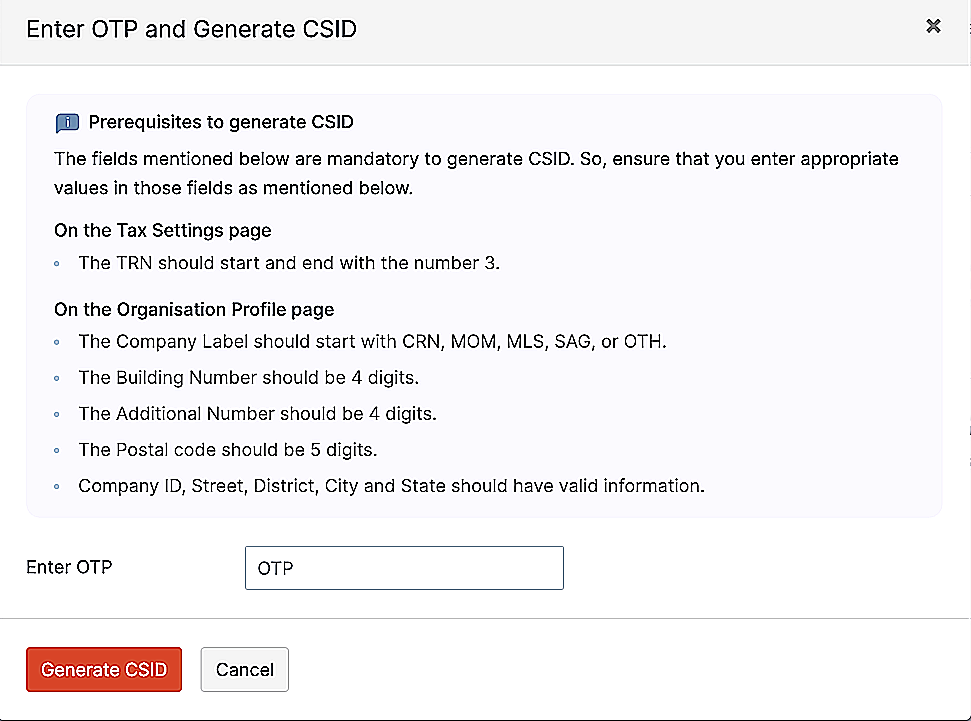
Insight: If CSID gets expired in Zoho Books, you’ll have to renew it in the Fatoora portal by selecting the Renew Existing Cryptographic Stamp Identifier option. Then, go to Zoho Books and click Renew CSID from Settings > Taxes & Compliance > e-Invoicing.
To check your organisation’s integration with the Fatoora portal, you can go to Fatoora portal and click View List Of Solutions and Devices.
Once the CSID is generated, you’ll be able to push your invoices from Zoho Books to the Fatoora portal.
Disconnect from Fatoora Portal
If the CSID was revoked in the Fatoora portal, you’ll not be able to push invoices to the Fatoora portal from Zoho Books. You’ll have to disconnect it in Zoho Books as well. Here’s how:
- Click Settings on the top right corner of the page.
- Click e-Invoicing under Taxes & Compliance.
- Click Disconnect.
- In the following pop-up, click the Disconnect button.
Warning: Ensure that you do not revoke the connection without a valid reason.
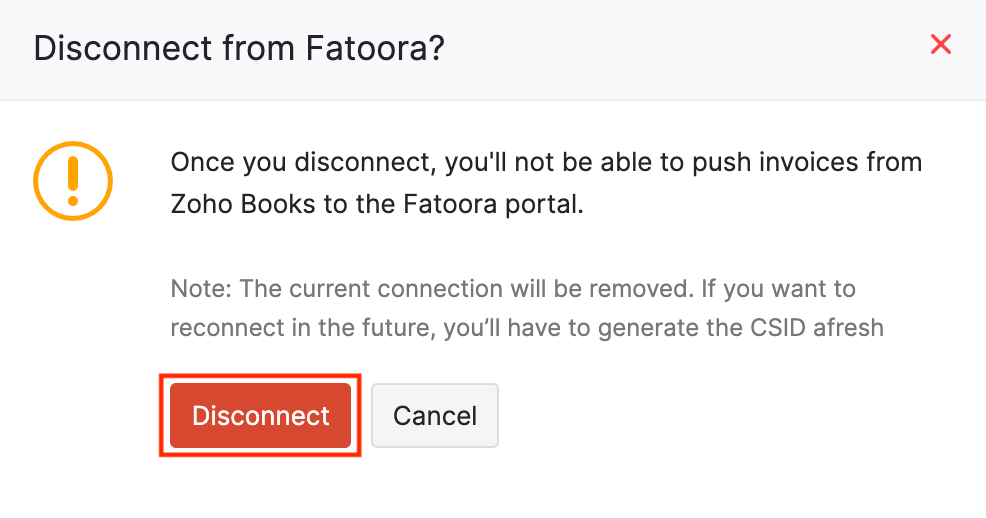
Configure User Permissions
You can configure the users in your Zoho Books organization to whom you would want to give access to the e-Invoicing module and push transactions to the Fatoora portal. Here’s how:
- Click Settings on the top right corner of the page.
- Click Roles under Users and Roles.
- Click New Role in the top right corner if you want to provide permission for a new role or click the Edit button next to the listed roles to edit an existing role.
- Scroll down to the e-Invoicing section and check the Push Transactions option.
- Click Save.
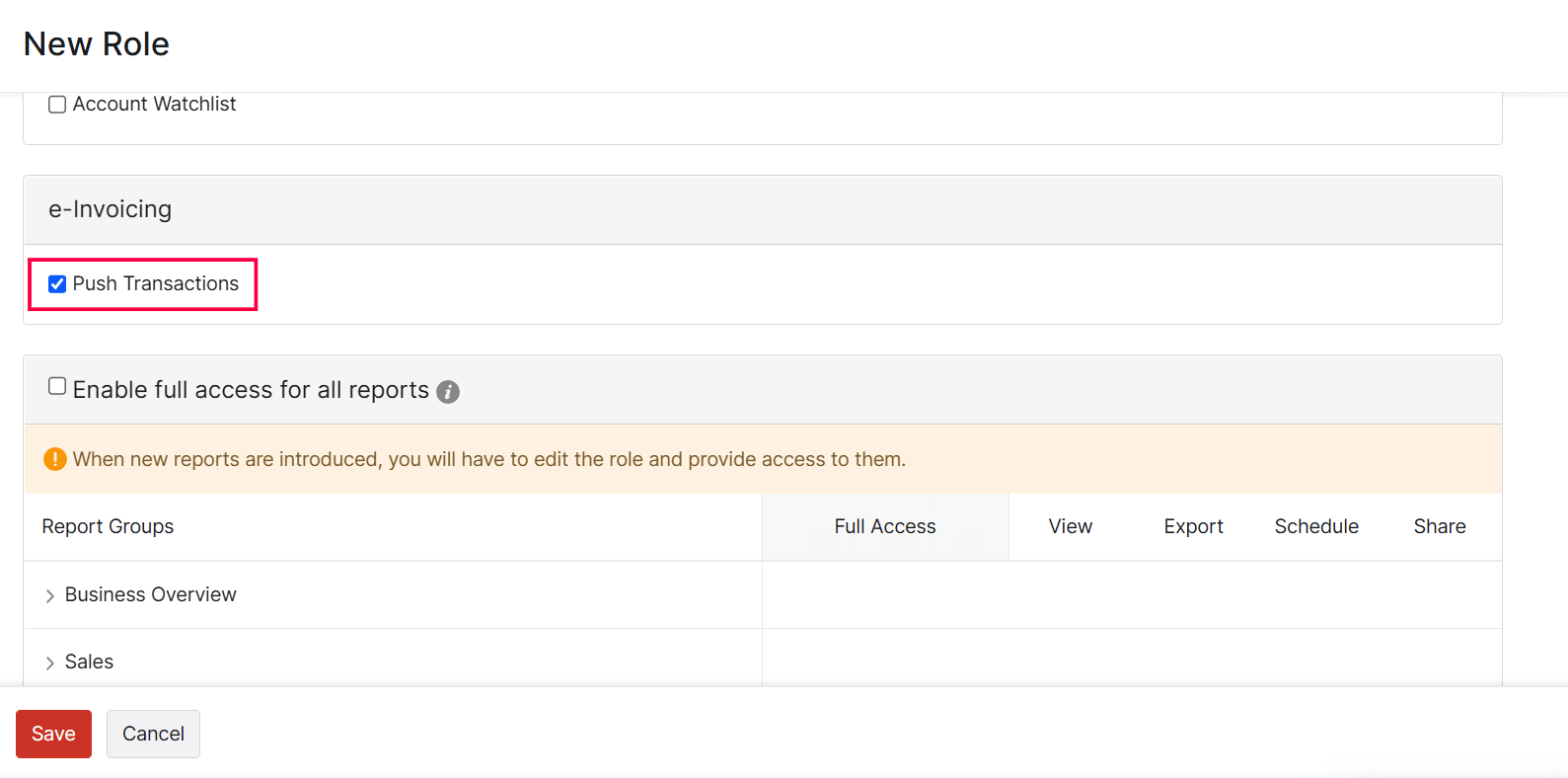
Functions in e-Invoicing
Statuses of e-Invoices
Here are the different statuses related to Invoices, Credit Notes and Debit Notes in Zoho Books.
| Status | Description |
|---|---|
| Yet-to-be Pushed | The transaction is not yet pushed to the Fatoora portal. |
| Push Initiated | The push has been initiated to the Fatoora portal. |
| Pushed | The transaction has been pushed to the Fatoora portal successfully. |
| Failed | The transaction has not been pushed to the Fatoora portal |
Mandatory Fields for an e-Invoice
When creating an invoice, there are some mandatory fields set by the ZATCA which is required for an e-Invoice. Here’s the list of mandatory fields required to create an e-Invoice:
| Module | Mandatory Fields |
|---|---|
| Organization’s details |
|
| Customer’s details |
|
| Invoice Creation | |
| Item details | Item Name |
Push your Invoices to Fatoora portal
In Zoho Books, invoices can be pushed to the Fatoora portal easily. The process depends upon whether you’ve enabled Transaction Approval or not. If you have enabled transaction approval, the invoice will go through an approval process.
Insight: If you’ve set-up multi-level approval, the invoice could be pushed only after the approval of the final approver.
Standard invoices should be pushed to Fatoora portal before sending it to the customer. Whereas, Simplified Tax Invoice, should be pushed to Fatoora portal within 24 hours from sending it to the customer as per ZATCA’s e-Invoicing Regulations.
Once you’ve created an invoice, you can push them to the Fatoora portal. Here’s how:
- Go to the Sales from the left sidebar and navigate to Invoices.
- Select the invoice that you want to push to the Fatoora portal.
- Click the Push to Fatoora button.
Notes: The PDF of the invoices will be exported in A3 format as per ZATCA’s regulation. Pushed invoices can also be viewed in XML format which will be attached along with the PDF of the invoice.

If push fails, you can retry after getting the error rectified.
Recurring Invoice and Quote Preferences
Recurring Invoices
If you’ve created a recurring invoice, the invoice will be pushed automatically to the Fatoora portal depending on the preference you’ve configured. If your preference is: Create Invoices as Drafts: The invoices created will be in draft status and you’ll have to push them to the Fatoora portal by clicking the Push to Fatoora button.
Create, Push, and Send Invoices: The invoices will be pushed to the Fatoora portal automatically and will be sent to the customers. If it fails to push, the reason for failure will be shown.
Create, Charge, Push and Send Invoices: The invoices will be charged and then pushed to the Fatoora portal automatically. If it fails to push, an error message will be thrown along with the reason for failure.
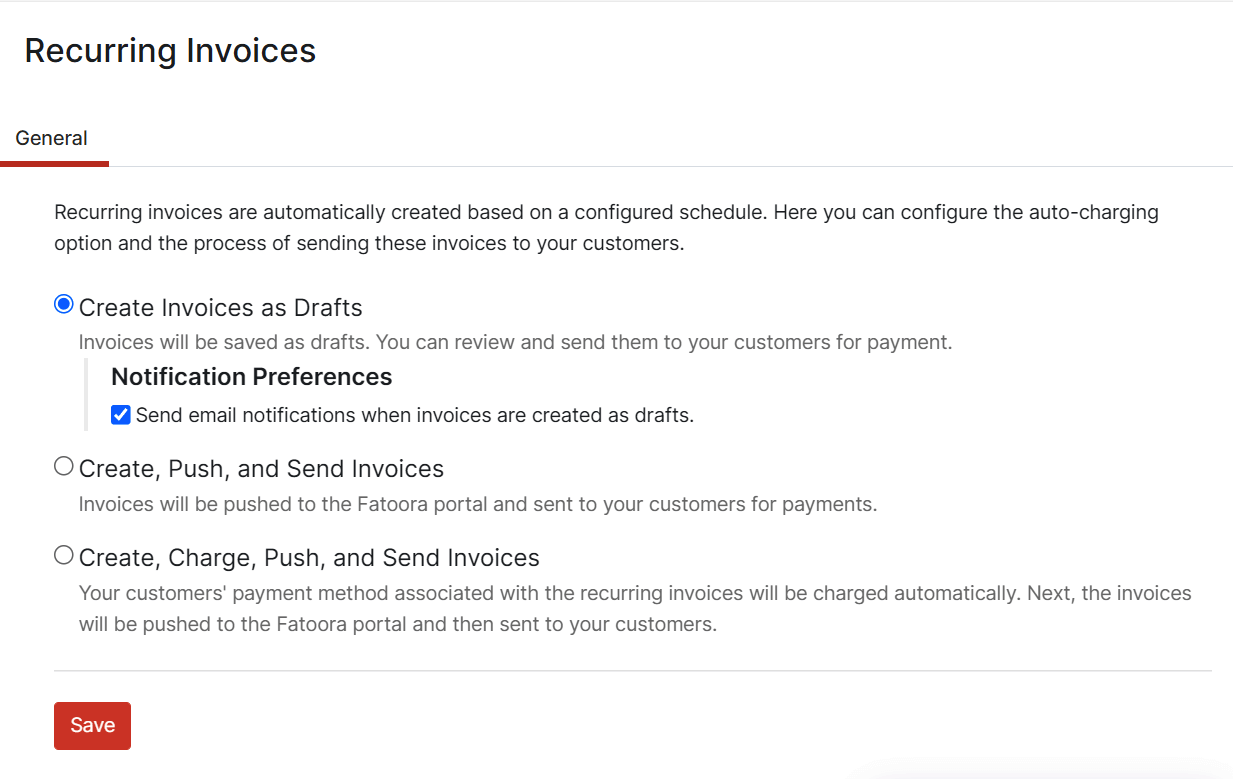
Quotes
If you’ve enabled quote preferences to send invoices when a quote gets approved, the invoices will be pushed to Fatoora portal automatically according to the preference you’ve set.
If your preference is:
Create Invoice as draft: The invoice created will be in draft status and you’ll have to push it manually using the Push to Fatoora button.
Create, Push and Send: The invoice created will be pushed to the Fatoora portal. If it is pushed successfully, it will be sent to the customer or if failed the reason for failure will be shown.
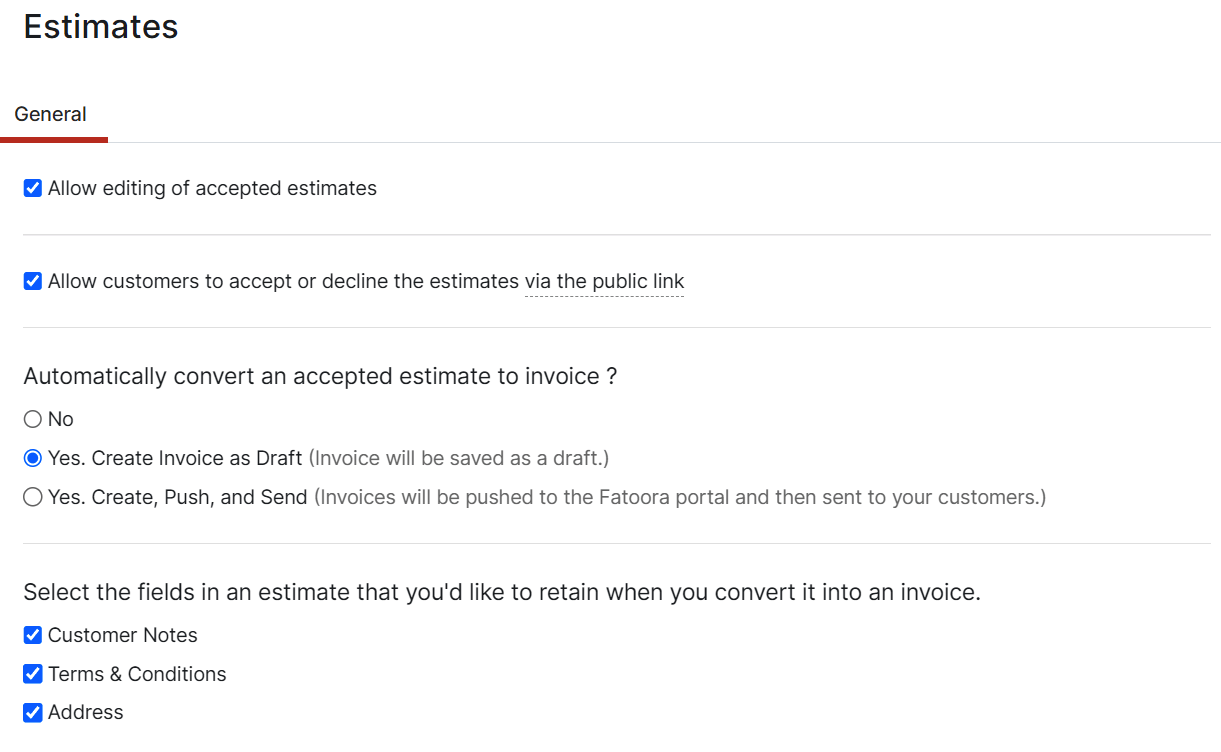
You can also refer to the help document provided by ZATCA regarding e-Invoicing.


 Yes
Yes